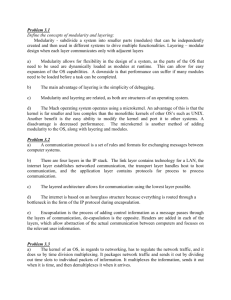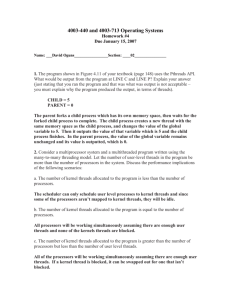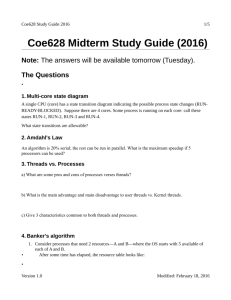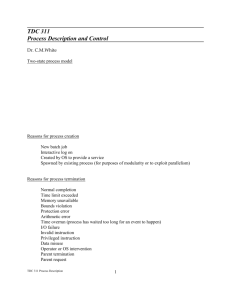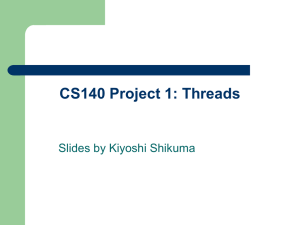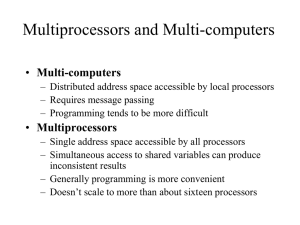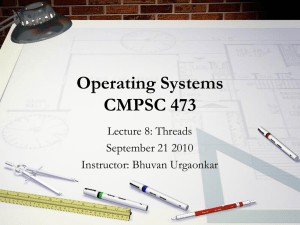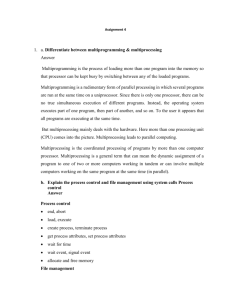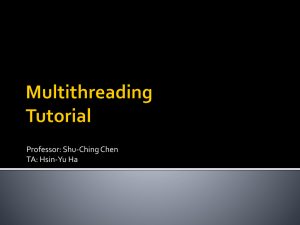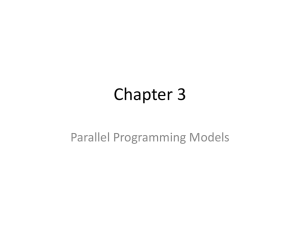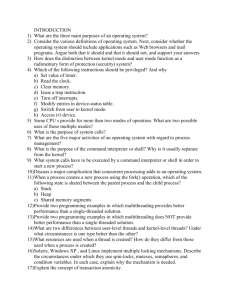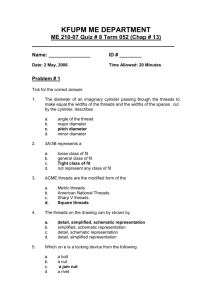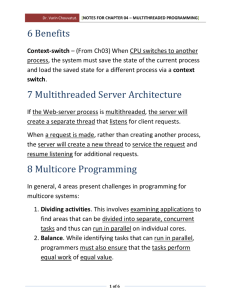Multithreading models
advertisement
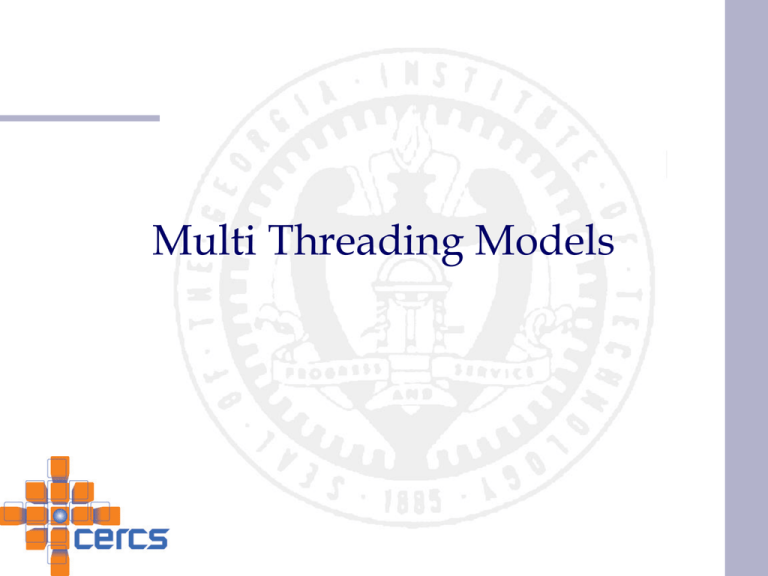
Multi Threading Models
Multithreading models
• There are three dominant models for
thread libraries, each with its own
trade-offs
– many threads on one LWP (many-to-one)
– one thread per LWP (one-to-one)
– many threads on many LWPs (many-tomany)
• Similar models can apply on scheduling
kernel threads to real CPUs
Many-to-one
• In this model, the library maps all threads
to a single lightweight process
• Advantages:
– totally portable
– easy to do with few systems
dependencies
• Disadvantages:
– cannot take advantage of parallelism
– may have to block for synchronous
I/O
– there is a clever technique for
avoiding it
• Mainly used in language systems,
portable libraries
One-to-one
• In this model, the library maps each
thread to a different lightweight process
• Advantages:
– can exploit parallelism, blocking
system calls
• Disadvantages:
– thread creation involves LWP
creation
– each thread takes up kernel
resources
– limiting the number of total threads
• Used in LinuxThreads and other
systems where LWP creation is not too
expensive
Many-to-many
• In this model, the library has two
kinds of threads: bound and
unbound
– bound threads are mapped
each to a single lightweight
process
– unbound threads may be
mapped to the same LWP
• Probably the best of both worlds
• Used in the Solaris
implementation of Pthreads (and
several other Unix
implementations)
High-Level Program Structure Ideas
• Boss/workers model
• Pipeline model
• Up-calls
• Keeping shared information consistent
using version stamps
Thread Design Patterns
Common ways of structuring programs using threads
• Boss/workers model
– boss gets assignments, dispatches tasks to workers
– variants (thread pool, single thread per connection…)
• Pipeline model
– do some work, pass partial result to next thread
• Up-calls
– fast control flow transfer for layered systems
• Version stamps
– technique for keeping information consistent
Boss/Workers
Boss:
Worker:
forever {
get a request
switch(request)
case X: Fork (taskX)
case Y: Fork (taskY)
…
}
taskX();
• Advantage: simplicity
• Disadvantage: bound on number of workers, overheard of
threads creation, contention if requests have
interdependencies
• Variants: fixed thread pool (aka workpile, workqueue),
producer/consumer relationship, workers determine what
needs to be performed…
Pipeline
• Each thread completes portion of a task,
and passes results
• like an assembly line or a processor
pipeline
• Advantages: trivial synchronization,
simplicity
• Disadvantages: limits degree of
parallelism, throughput driven by
slowest stage, handtuning needed
Up-calls
• Layered applications, e.g. network protocol stacks
have top-down and bottom-up flows
• Up-calls is a technique in which you structure layers
so that they can expect calls from below
• Thread pool of specialized threads in each layer
– essentially an up-call pipeline per connection
• Advantages: best when used with fast, synchronous
control flow transfer mechanisms or program
structuring tool
• Disadvantages: programming becomes more
complicated, synchronization required for top-down
Version Stamps
• (Not a programming structure idea but
useful technique for any kind of
distributed environment)
• Maintain “version number” for shared
data
– keep local cached copy of data
– check versions to determine if changed





